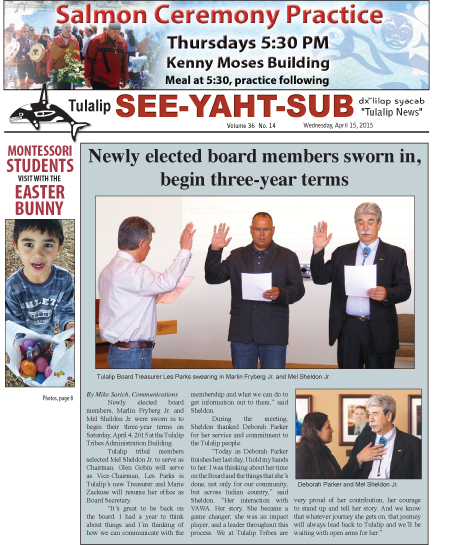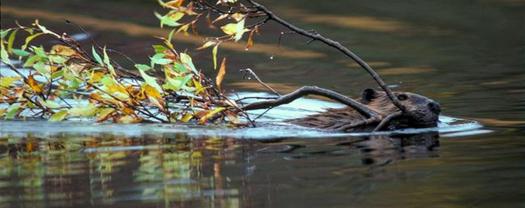Forest Service Considers Thousands Of Acres For Geothermal Leasing
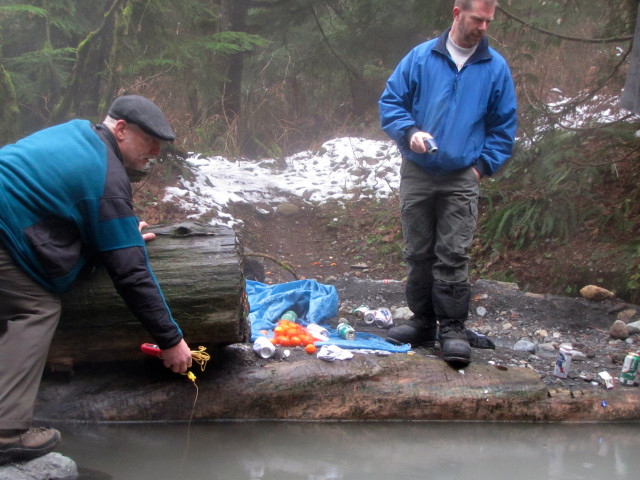
Ashley Ahearn
By Ashley Ahearn, KUOW
The volcanic ridges of the Cascades have long been poked and prodded by people who want to know what kind of geothermal energy they’ll find beneath the surface.
But many of the Northwest’s hot spots are on public lands. And in some cases, federal land managers have prevented access by companies seeking to convert that magmatic force into clean electricity.
That could soon change. The U.S. Forest Service is pursuing plans to make more than 80,000 acres in Washington’s Mt. Baker/Snoqualmie National Forest available for lease to energy companies. A final decision on that is expected as early as this month.
Companies wanting to develop geothermal power on federal lands would then undergo a full environmental review for each proposed project. Those studies would take into account the potential seismic risk, vehicle traffic and transmission lines that could be associated with a geothermal power plant.
The development of geothermal power is under way in some parts of the Northwest, which the industry regards as a new frontier. Within that clean-energy frontier, Mount Baker is an outpost sentinel on its northern edge. Its steaming crater and the hot springs on the mountain’s eastern flanks are drawing attention from would-be geothermal developers.
Using steam from deep beneath the earth’s surface to spin turbines and generate electricity is not a new idea. But as more and more renewable energy comes on line, geothermal delivers in a way that intermittent sources like wind and solar do not: it provides a consistent source of what industry insiders call “baseload” power. That’s appealing to utilities like Snohomish PUD.
“A baseload renewable resource is something to treasure. We view it as a very attractive possibility,” said Adam Lewis with the Snohomish Public Utility District. The district has spent $5 million researching geothermal developments in Washington and is interested in building a traditional geothermal plant in the Mt. Baker/Snoqualmie National Forest to power roughly 20,000 homes.
The Forest Service’s move has raised concerns about negative impacts on natural ecosystems. Fifteen conservation groups have submitted a joint lettercommenting on the service’s proposed lease.
“We should be looking at everything but is this really where we need to be looking and if we are, we need to be real careful going up into wild rivers or intact forests,” said Tom Uniack, Conservation Director for Washington Wild.
The groups pushed for stronger protections on rivers and roadless sections of the forest, as well as certain forested areas that provide old growth habitat for northern spotted owls and marbled murrelets — two bird species that are protected under the Endangered Species Act.
How big is the Northwest’s geothermal potential?
California leads the world in geothermal power generation. Development has also grown in Nevada and Utah, but the Northwest lags behind.
Despite the region’s iconic volcanoes that rise up from the Cascade Range through Oregon and Washington, the geothermal potential in the region varies greatly. In Washington, hot spots appear to be limited to areas immediately surrounding volcanoes like Rainier and Baker.
 Less than 5% of the total hydrothermal heat discharge from the Cascades occurs north of latitude 45N, according to research from the US Geological Survey. USGS
Less than 5% of the total hydrothermal heat discharge from the Cascades occurs north of latitude 45N, according to research from the US Geological Survey. USGSResearch from the U.S. Geological Survey shows extensive hydrothermal heat discharge in large stretches of the Cascades in Oregon, an indication of geothermal potential, particularly in the state’s southern and eastern stretches. But those heat signatures drop off as you head north of Mount Jefferson and the Three Sisters peaks.
In Washington, the places that could provide geothermal power appear to be even scarcer. Steve Ingebritsen, a geologist with USGS, found that less than 5 percent of the total hydrothermal heat discharge from the Cascades occurs north of the Oregon/Washington border.
“Maybe that’s because the high rainfall and snowfall and snowmelt and fractures near the surface are allowing the water to percolate down and mask the geothermal indicators we’d be looking for,” said Pete Stelling, a geology professor at Western Washington University in Bellingham. “But we don’t really know. We’re still on the hunt right now.”
The Washington Department of Natural Resources has analyzed temperatures in more than 450 wells around the state and found similar results.
But that doesn’t mean it’s game over in the pursuit of geothermal energy in the Evergreen State.
“Although the geothermal potential of Washington is lower than other West Coast states, such as Nevada, Oregon and California, there are still areas of relatively moderate to high potential,” said Dave Norman, state geologist with DNR.
The DNR sampling highlighted hot spots at Mount Baker and the Wind River area as the best places for further geothermal exploration in Washington. (You can look at their mapped well data here.) There are currently no geothermal electricity generating plants in operation in the state.
In Oregon, geothermal energy provides heat for the city of Klamath Falls but geothermal electrification plants are still few and far between, despite a more extensive geothermal resource than that of Washington. There are two plants in operation – a small one in Klamath Falls at the Oregon Institute of Technology and another 30.1MW facility in Malheur County, which borders Idaho and Nevada.
Seattle-based company, AltaRock is piloting new hydroshearing geothermal technology at the Newberry Crater in Central Oregon, where the Forest Service has already issued a 53,000 acre lease in the Deschutes National Forest.
Retreating to nature vs. harnessing nature
Orange peels, beer bottles and discarded bras and bathing suits litter the Mount Baker Hot Springs when Dave Tucker, co-director of the Mount Baker Volcano Research Center, and Western Washington University’s Stelling arrive. This area is a hot spot for local college students as well as geothermal energy researchers.
“104.1, 104.3,” Tucker reads temperatures (in degrees Fahrenheit) off his sensor. A broken bottle crunches under his boot. “It’s not, certainly you wouldn’t generate any power from this thing but it’s an indicator that hot water can reach the surface here.”
The springs are within the area of national forest currently under consideration for potential geothermal leasing, though the Forest Service says that any development near the springs would undergo a comprehensive review and the springs would not be disturbed.
The faint rotten egg smell and warm surface temperatures in this pool are enough to interest energy companies and utilities in exploring this area further.
A few hundred yards up the hill from where the geologists scrutinize mineral deposits and algae growth around the murky pool, a tent peeps out of the trees. Four college students groggily make breakfast on their camp stove.
“Does anyone want bacon?” asks Nathan Sundyne, a student at Western Washington University.
Samantha Miller sits in a camp chair nearby.
“I think it’s cool, the idea of harnessing natural energy like that,” she says. “But if it really compromises the integrity of the area that would be kind of sad.”
“Do we destroy the habitat we have, that we get to sit around and enjoy, for energy for more houses and development – growth for the sake of growth?” Paul Bikis, a fellow student asks. “Or do we want to preserve the places that we cherish?”
As Tucker and Stelling hike out of the hot springs area, Stelling pauses to pick up a discarded beer bottle.
“People say ‘no [geothermal development] – it’s so pretty here,’ and then they leave this mess around,” Stelling said, frustration in his voice. He acknowledges that harnessing geothermal power does come with some local environmental impacts, but he says that we can no longer afford to be “hamstrung” by the “not in my backyard” approach to new clean energy projects.
“If we want to save the environment and be the environmentalists that we hope that we are, then we need to consider what we’re doing on a bigger scale.”
April 15, 2015 Tulalip See-Yaht-Sub
Tulalip Community Support Group for Trauma Survivors, Begins April 14
Diabetes Day at the Karen I Fryberg Health Clinic, April 14
Heritage Hawks basketball awards banquet
by Micheal Rios, Tulalip News
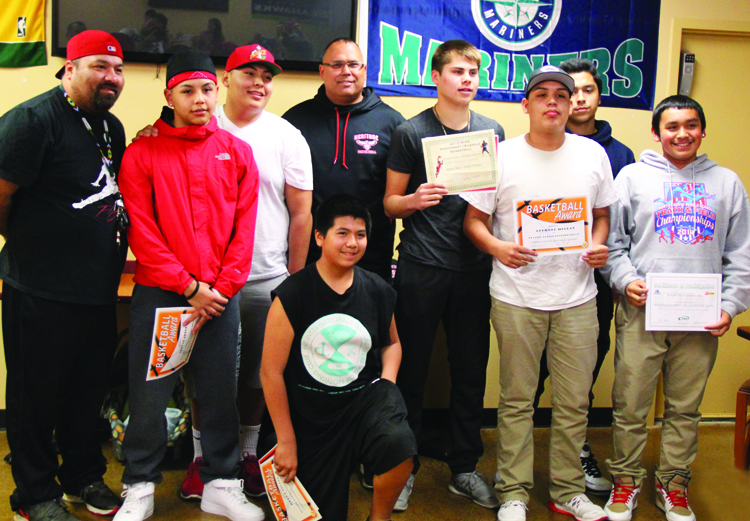
Photo/Micheal Rios
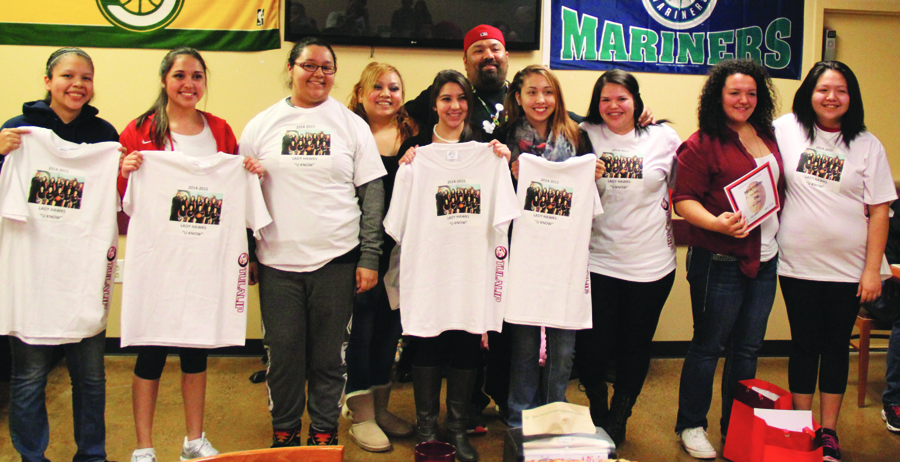
Photo/Micheal Rios
On Thursday, April 2, the annual awards banquet was held to recognize the Heritage Hawks basketball players. This year’s banquet took place at Alfy’s Pizza in Marysville. All the Hawks and Lady Hawks players attended, accompanied by their family and friends who cheered them on throughout the basketball season.
Each player from both the Hawks and Lady Hawks teams received a participation award congratulating them for playing varsity basketball. A second award was given to each player that was specifically personalized to commemorate something special they did on the court or brought to the team.
Cyrus “Bubba” Fryberg, Lady Hawks coach, opened up the girls’ awards ceremony by thanking each and every one of his players for making the best out of their season, “First of all I’d like to thank everyone for being here and taking the time to come and finish up the season. The girls worked really hard and played really hard and we had fun. Practices were really fun and I thought we really gave the effort I expected. Early in the season there really weren’t many girls playing. We only had five Lady Hawks for our first several games, so we had to really start recruiting girls to come out and play. After we did that, then we had a full team and really started to play. It took a few week to build up that sense of team with all the new girls, but they all played hard. I really want to thank my girls for all their hard work, especially the seniors.
“Going into next year, for the girls coming back, we are going to keep working hard and to continue focusing on improving as a team. We have six girls coming back and we expect to add more girls onto the team. I just want to thank you all for doing what I asked on the floor and off the floor and for making this season a fun one for the players and the coaches. I really appreciated all the hard work we put in to improving and we’ll continue to work on doing better things next year.”
The following list is the name of each personalized award handed out to the Lady Hawks and the player who received the award.
Awards:
Rookie of the Year: Larissa Menser
Most Coachable: Shaelynn Sanchey
Most Dedicated: Cyena Fryberg
Most Inspirational: Mikaylee Pablo
Best Defender: Jaylin Rivera
Most Rebounds: Nina Fryberg
Captain’s Award & Miss Hustle: Myrna Red Leaf
Captain’s Award, Best Offensive Player & Most Outstanding Player: Michelle Iukes
Marlin Fryberg, Hawks coach, opened up the boys’ awards ceremony by saying, “I want to thank all the families who are here to support your children, and I want to say thank you to all the high school faculty staff who are here for our kids. To my players, I hope you all recognize that the time and work you have put into this game together has created a friendship and bond between you all that will last the rest of your lives.
“This season was a mediocre one. We all know that it could have been better, that we could have been better. We’ll use this season and learn from it so that we can continue to develop the team for next year.”
The following list is the name of each personalized award handed out to the Hawks and the player who received the award.
Awards:
Rookie of the Year: Nashone Whitebear
Most Improved: Anthony McLean
Most Rebounds: Willy Enick
Mr. Hustle: Dontae Jones
Captain’s Award: Jessie Louie
Captain’s Award & Best Offensive Player: Robert Miles, Jr.
UW Tacoma partnership with Puyallup Tribe taps ancient wisdom for innovations in learning
University of Washington
TACOMA, WASH. — The Puyallup Tribe of Indians and the University of Washington Tacoma are launching a pathbreaking collaboration that aims to infuse Native ways of knowing into UW Tacoma teaching, learning and research.
The effort will be funded initially by a $275,000 grant from the Puyallup Tribe. During a four-year period, the funding will support curriculum transformation, research activity, community engagement and student enrichment.
Puyallup Tribal Council Chairman Bill Sterud said that the collaboration highlights the unique opportunity to “meld into academia in a public sphere” the contemporary experience of Native Americans, rooted in an ancient heritage and infused with a cutting-edge entrepreneurialism.
“With an immense amount of pride, the Puyallup Tribe of Indians has committed to spearheading this program as it is essential to educate students about indigenous ways of knowing, modernity of tribal business, and tribal government. We hope that the impact of our funding will cultivate additional support from our fellow Tribes to ensure a sustainable program that will enrich the lives of many students,” said Sterud.
“We as a society have a responsibility: our unseen future must be unified with our past and our present. The Puyallup Tribe of Indians recognizes this responsibility by our support of higher education and our charitable giving. This is how we build bridges toward community success,” said Sterud.
The idea for the collaboration has emerged at a time of increased focus on the importance of sustainability: in business, government, and individual livelihoods. There is a growing awareness that the practice of sustainability can benefit from the insights offered by indigenous knowledge, with its deep place-based roots (often referred to as “traditional ecological knowledge”). UW Tacoma’s 25-year commitment to community engagement is seen by both the university and the Tribe as an opportunity to establish deep and lasting connections among Tribal and non-Indian communities throughout the Northwest.
“The heart of the collaboration between UW Tacoma and the Puyallup Tribe will be the interaction between the tribal communities and the campus community. We hope all our faculty, staff and students will gain a wider perspective on ways of interacting with the world, and we are incredibly grateful to the Puyallup Tribe for supporting this transformational vision,” said UW Tacoma Chancellor Mark A. Pagano.
The grant is intended to amplify the teaching, research and service of a growing cluster of Native American faculty and staff at UW Tacoma. The university recently hired Danica Miller (Puyallup) and Michelle Montgomery (Eastern Band Cherokee; Haliwa Saponi) as assistant professors of Native American studies in the School of Interdisciplinary Arts & Sciences; and Michael Tulee (Yakama) as Native American educator in the Office of Equity & Diversity.
The grant will tap into a growing awareness of the parallel and complementary role that traditional ecological knowledge can play alongside “scientific ecological knowledge.” Examples of how the melding of these two approaches has led to better understanding include forest fire management, water resources management, endangered species protection and fisheries management.
“This grant from the Puyallup Tribe will help address one of the greatest barriers faced by Native people today: the lack of information, and the abundance of misinformation, the general public has about tribes and tribal people. As the work of this grant ripples out, our students, faculty and staff will share in a great communal experience with roots much deeper than the 25-year history of UW Tacoma,” said Sharon Parker, UW Tacoma assistant chancellor for equity and diversity.
The Puyallup Tribe has been providing ongoing support to UW Tacoma and the University of Washington overall for many years, including to the UW School of Law, and events at UW Tacoma such as the annual Martin Luther King., Jr., Unity Breakfast and Convocation. This new grant is, by far, the Tribe’s largest investment in the relationship with the university.
Puget Sound Tribe’s Lawsuit Aims To Keep Oil Trains Off Its Reservation
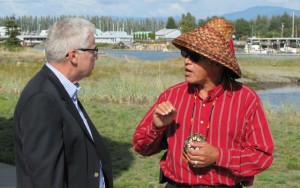
Ashley Ahearn
By Ashley Ahearn, KUOW
The Swinomish Tribe has filed a lawsuit against BNSF Railway to stop oil trains from traveling through its reservation.
BNSF train tracks cross the top of the Swinomish Reservation in Skagit County. In recent years they’ve been used to move oil from North Dakota to two refineries in Anacortes.
In 1990 BNSF and the Swinomish reached a settlement that required BNSF to regularly update the tribe on the type of cargo moving through the reservation. It also limited traffic to two 25-car trains per day.
Now, the tribe says BNSF is running several times that many train cars through the reservation each day (an estimated six oil trains of more than 100 cars per week).
The Swinomish Tribe says BNSF does not have permission for the increased oil train traffic and that the company is putting the tribe’s way of life at risk.
“We told BNSF to stop, again and again,” said Swinomish Chairman Brian Cladoosby. “Our signatures were on the agreement with BNSF, so were theirs, and so was the United States. But despite all that, BNSF began running its Bakken oil trains across the Reservation without asking, and without even telling us.”
The lawsuit was filed in U.S. District Court in Seattle. It seeks to stop BNSF Railway from moving oil through the reservation.
BNSF spokesperson Courtney Wallace says the company has received the complaint and is reviewing it.
Wilma Mankiller added to final ballot to place woman on $20 bill

Source: Indianz.com
A group called Women on 20s has added the late Wilma Mankiller, the first woman elected to lead the Cherokee Nation, to its final ballot.
The group hopes to convince President Barack Obama to put a woman on the $20 bill. But of the 15 candidates that were named as a replacement for president Andrew Jackson, none represented Indian Country up until now.
“Because of strong public sentiment that people should have the choice of a Native American to replace Andrew Jackson, Cherokee Nation Chief Wilma Mankiller, was added to the final ballot,” the group wrote on its website.
Ginnie Graham, a columnist for The Tulsa World, brought up Mankiller last month and called her the most suitable person for the bill. “A best statement would be to honor a Native American in place of the president who was called ‘Indian Killer,'” she wrote on March 18.
Louise Erdrich, a member of the Turtle Mountain Band of Chippewa Indians, added her voice in a short piece for The New York Times on March 20. “A descendant of the survivors of that cruel march where some 4,000 peaceful people died, Wilma Mankiller led her people with forceful calm,” the award-winning author stated.
Mankiller now joins Harriet Tubman, Eleanor Roosevelt and Rosa Parks as the four finalists. Voting is open on the group’s website.
Beavers Star in Tribes’ Fish, Water Conservation Project
SEATTLE – Sometimes moving to a new neighborhood is the best choice for everyone. That’s the theory behind a research project by the Tulalip Tribes of Washington to relocate beaver families. The critters have become a nuisance in the lowlands but in higher elevations, their hard work can benefit the entire Snohomish watershed.
Ben Dittbrenner is a graduate student of University of Washington Environmental and Forestry Sciences and he’s working with the Tribes to trap and move beavers and study the effects of their dam-building. When less snow is predicted with a changing climate, he says a beaver dam is just the right type of eco-friendly barrier to moderate spring runoff.
“It will just flow right down to Puget Sound and it won’t stay in the system for more than a couple days,” says Dittbrenner. “But if we can trap it high up in the watershed, we can keep it there for months and hopefully continue to keep those systems healthier for a longer period of time.”
This will be the second year for the project. Dittbrenner says one family’s big dam in the pond that is its new home has raised the water level by four feet.
Jason Schilling, the Tribes’ wildlife biologist, says beaver dams are engineering marvels, holding back sediment and creating more complex stream systems and good habitat for fish feeding and spawning. In this part of Washington, he says that’s especially important.
“The Snohomish ecosystem is the second-largest salmon-producing system in Puget Sound and there are some limiting factors for salmon production, the biggest ones are water temperature and sedimentation,” says Schilling. “It just so happens that beavers are very good at fixing those problems.”
Relocation starts again in June. The goal is to trap and move at least ten families. Schilling explains beavers tend to stick together as family units and are more likely to settle into an area and get to work if they arrive together.
The project is one of 22 conservation projects across the country, among 13 Native American Tribes, to receive grant funding from the U.S. Fish and Wildlife Service.







